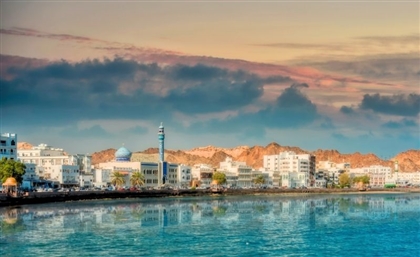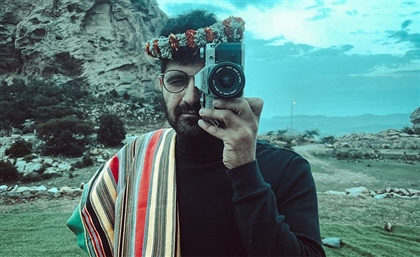Inside Oman’s 500-Year-Old Hamlet Turned Guesthouse
High in Oman’s Wadi Tiwi, Suwgra’s 500-year-old stone homes are reborn as a guesthouse. Run by locals, it offers pared-back comfort, ancestral memory, and mountain silence far from modern noise.

At the edge of Wadi Tiwi in Oman, the mountains pinch into a narrow gorge where a cluster of stone houses once clung like swallows’ nests. The settlement, called Suwgra, is thought to be more than five centuries old. It was abandoned decades ago when families moved across the ridge to modern homes. Walls collapsed, roofs sagged, goat paths grew over with scrub.-d17abe60-a469-444e-a846-742dee06120b.jpg) Now, climbing the steep steps into the old village, you hear the pulley before you see it: a wooden wheel groaning as a rope basket swings overhead, ferrying luggage across the gorge. Visitors crane their necks, watching their suitcases float high above the ravine. As Mohammed Al Shereiqi, Executive Director of the Heritage Inn, explains, “It is purely for transporting luggage, born out of necessity due to the cliffside location and the difficulty of carrying bags by hand.”
Now, climbing the steep steps into the old village, you hear the pulley before you see it: a wooden wheel groaning as a rope basket swings overhead, ferrying luggage across the gorge. Visitors crane their necks, watching their suitcases float high above the ravine. As Mohammed Al Shereiqi, Executive Director of the Heritage Inn, explains, “It is purely for transporting luggage, born out of necessity due to the cliffside location and the difficulty of carrying bags by hand.”
-9b65ff7d-3fbd-4a4e-ab74-e49e7e9a1b97.jpg)
According to Al Shereiqi, who leads the project with relatives and neighbours, the work began with ancestral blueprints. “This area is, in fact, our homes and the homes of our ancestors. Every corner holds part of our memories. The project was born out of a desire to bring life back to this family heritage and transform it into a hospitality experience that preserves its authenticity.”
Suwgra was no ruin before. “These houses were once full of life, with families farming the land and relying on the flowing aflaj waters,” Al Shereiqi tells SceneTraveller. “Over time, many moved away, leaving the houses silent, until we began our journey to revive them.”
-421bcf05-ebf0-491d-af83-82bdf3b9a8a3.jpg)
That revival meant trial and error. “The greatest challenge was finding a balance between preserving the traditional architectural style and offering comfort for guests,” he says. The team reused the same stones and mud that originally built the houses, working with local craftsmen “who understood the language of these old walls.” A wall might fall twice before standing. Palm trunks were cut for beams. Doors were scavenged or rebuilt in the old style.-1962ae31-8b65-4932-84ce-e19070f79c73.jpg) Reaching Suwgra is part of the experience. After leaving the car park, guests walk about 15 minutes along a narrow path into the wadi and then climb the other side, the mountains rising around them.
Reaching Suwgra is part of the experience. After leaving the car park, guests walk about 15 minutes along a narrow path into the wadi and then climb the other side, the mountains rising around them.
The Suwgra has just six rooms, spread across simple stone houses that cascade down the mountainside, linked by steep, narrow walkways. Each is unique, with arched alcoves, low beds, and private terraces overlooking the mountains. Most have ensuite bathrooms, and all have electricity, but there is no air-conditioning or heating. In winter, thick blankets are laid out on the beds; in summer, the stone walls hold the cool.-13033c29-8203-437a-9bf8-6ed4aa2d1a2a.jpg) Meals are offered on a half-board basis, with neighbors preparing traditional dishes often served outdoors with sweeping valley views. Between meals, guests can book guided hikes through the surrounding mountains, tracing abandoned villages, terraced farms, and hidden springs.
Meals are offered on a half-board basis, with neighbors preparing traditional dishes often served outdoors with sweeping valley views. Between meals, guests can book guided hikes through the surrounding mountains, tracing abandoned villages, terraced farms, and hidden springs.
Here, comfort is pared back to its essence: the warmth of water, the weight of a blanket, and the gift of silence –“without televisions or the noise of modern life,” as Al Shereiqi puts it. Instead, guests take home other memories. “We want guests to leave feeling as though they’ve lived inside an Omani story, not just taken a trip,” he says. “We hope they remember the sound of the wind between the mountains, the warmth of the villagers’ welcome, and a sense of peace and connection to nature.”
Sometimes those feelings are overwhelming. One foreign guest, preparing to leave, began to cry. “They said: ‘I have never felt like part of a family the way I did here,’” Al Shereiqi shares.-e642f462-905a-47a5-b546-181f35f75a09.jpg) The Suwgra is not maintained by outsiders. “The village residents themselves are the experts in restoration, especially when it comes to using local materials, ensuring that every repair or modification retains the soul of the place.”
Local craftsmen continue to shape doors and windows; neighbors prepare meals and guide tours. “It has created both direct and indirect job opportunities, revived traditional crafts, and encouraged locals to reconnect with and care for their ancestral homes.”
That community extends to sustainability. “We reuse rainwater for irrigation, rely on solar panels for part of our energy, and avoid using any environmentally harmful building materials,” Al Shereiqi explains. There is also a push to revive traditional woodcraft, from simple furniture to the Atem walking sticks once carried along these mountain paths.
The Suwgra is not maintained by outsiders. “The village residents themselves are the experts in restoration, especially when it comes to using local materials, ensuring that every repair or modification retains the soul of the place.”
Local craftsmen continue to shape doors and windows; neighbors prepare meals and guide tours. “It has created both direct and indirect job opportunities, revived traditional crafts, and encouraged locals to reconnect with and care for their ancestral homes.”
That community extends to sustainability. “We reuse rainwater for irrigation, rely on solar panels for part of our energy, and avoid using any environmentally harmful building materials,” Al Shereiqi explains. There is also a push to revive traditional woodcraft, from simple furniture to the Atem walking sticks once carried along these mountain paths.
“We dream to become a globally recognized destination for cultural tourism in Oman and a model for sustainable hospitality experiences in the region,” Al Shereiqi says, “but always led by the site itself.” His advice to others echoes that instinct: “Begin by listening to the place and its story before you start building. Don’t impose a new identity on it, let its own character guide every decision you make.”
Trending This Week
-
Dec 23, 2025



























